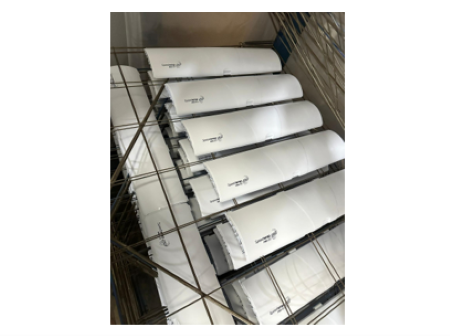To ensure uniformity in pizza production, manufacturers have focused on making forming, weighing and decorating solutions smarter, writes Assistant Editor Joseph Clarke
The global pizza market is projected to continue to grow, buoyed by the growth of the foodservice and restaurant markets, which vary regionally. According to a report published by Solina into the pizza market, consumption of pizza is split between pizza chains, which dominate in the US, while independent pizza restaurants are where consumers prefer to go to eat.
“We’ve witnessed artisanal style pizza becoming more popular when using industrial lines,” explained Stefan Praller, Senior Director Customer Experience, FRITSCH Bakery Technologies. “Long pre-fermentation, soft dough with high hydration rates and non-uniform shapes make up this trend.” Besides this, high-quality toppings, greater variety and demand for alternative pizza bases like “alternative proteins, vegan, low carb, gluten-free and so on,” Stefan said are fuelling the market.
This demonstrates how pizza manufacturers can tap into these trends with different formats such as adding more protein for health or experimenting with sauces and toppings to meet indulgence requirements. Whatever the format, uniformity and precision is key when producing attractive pizzas.
The variety of pizza
The variety and versatility of pizza is part of its appeal. Experimenting with crust thickness, flavours and toppings enables bakers to present a variety of formats to appeal to different tastes. Combining spicy and sweet flavours in pizza, like adding honey to sriracha, is becoming increasingly popular, or including pineapple and peppers. Crustless pizzas, folded and in snack formats, represent innovation in this area where producers are looking to bring exciting products to market. Thick crusts remain preferable with consumers, as well as cheese and pepperoni being two of the most popular toppings.
“For pizza manufacturers producing a high volume of pizzas per day, there are trends related to efficiency and automation, product range diversification, sustainability and innovation in flavours and toppings that may be relevant,” explained Wouter van der Veek, Product Manager Pizza, Pie & Decoration at Rademaker. “Experimenting with new flavours and distinctive toppings can help surprise and engage consumers. Think of unique combinations of ingredients, local specialities or seasonal toppings. An example of a unique combination or new trend is ‘dessert pizzas’. These sweet varieties are often made with a sweet dough and topped with sweet ingredients.”
In the launch of their IMPRESSA line at the iba trade fair in October of last year in Munich, the spokesperson told me a notable feature of the line was its compact nature. “It’s 20% shorter than before, for the same output as before,” Stefan put it. It includes savvy features like removable modules, to encourage greater accessibility for cleaning and maintenance purposes. “The Soft Dough Sheeter (SDS) and the Soft Dough Roller (SDR) can be removed from the line and taken for thorough cleaning. The hygienic design of individual components includes consistent use of smooth surfaces, watertight covers on threaded connections and rounded corners where no dirt can accumulate.”
To enable bakers to produce a variety of products on the one line, the use of components like a cutting roller or guillotine or press means a bakery could use a cutting roller…
This feature is from our upcoming January/February issue. Read our magazine here.
Never miss a story… Follow us on:
![]() International Bakery
International Bakery
![]() @int_bakery
@int_bakery
![]() @Bakeryint
@Bakeryint
Media contact
Caitlin Gittins
Editor, International Bakery
Tel: +44 (0) 1622 823 920
Email: editor@in-bakery.com







